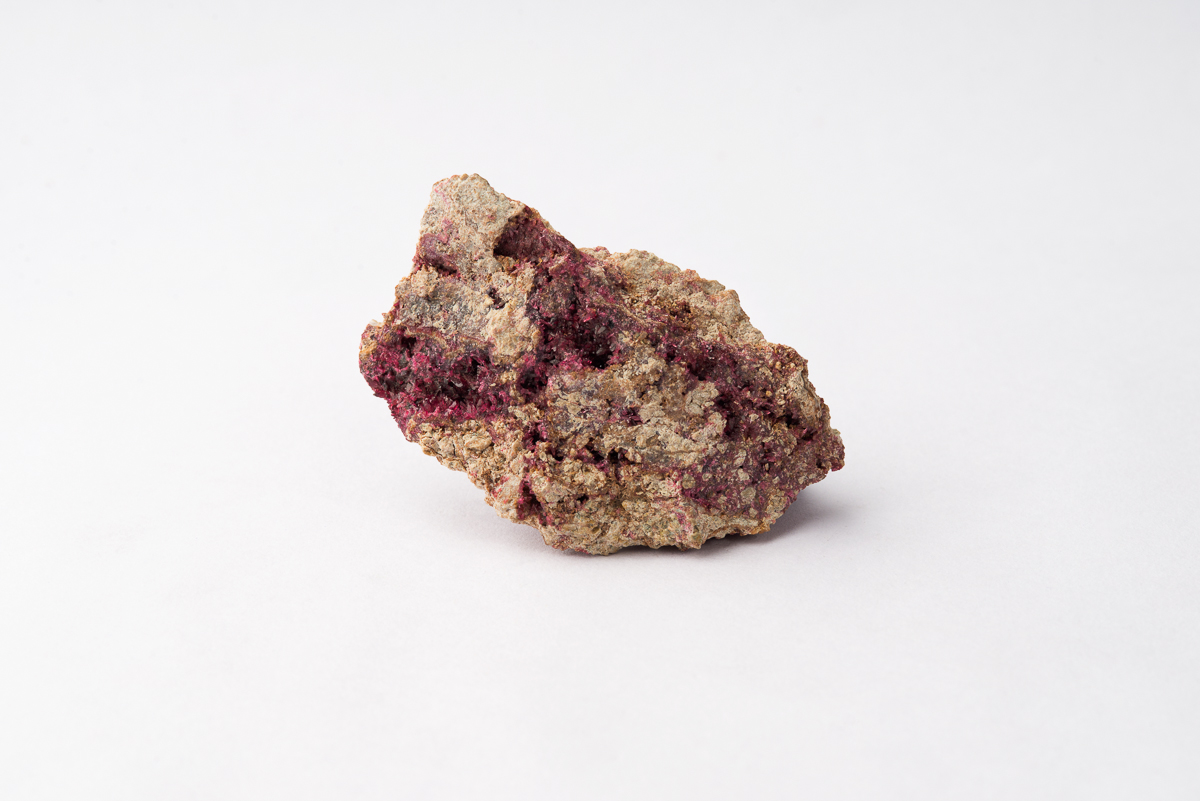

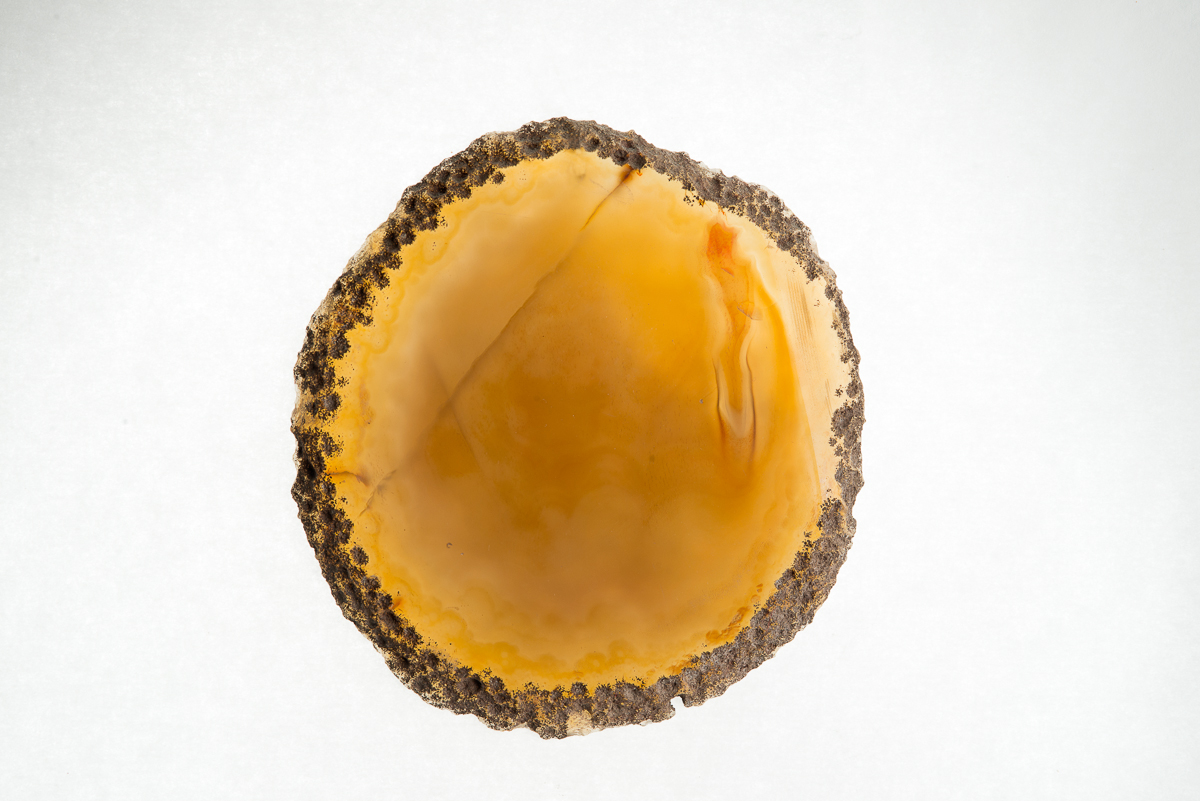
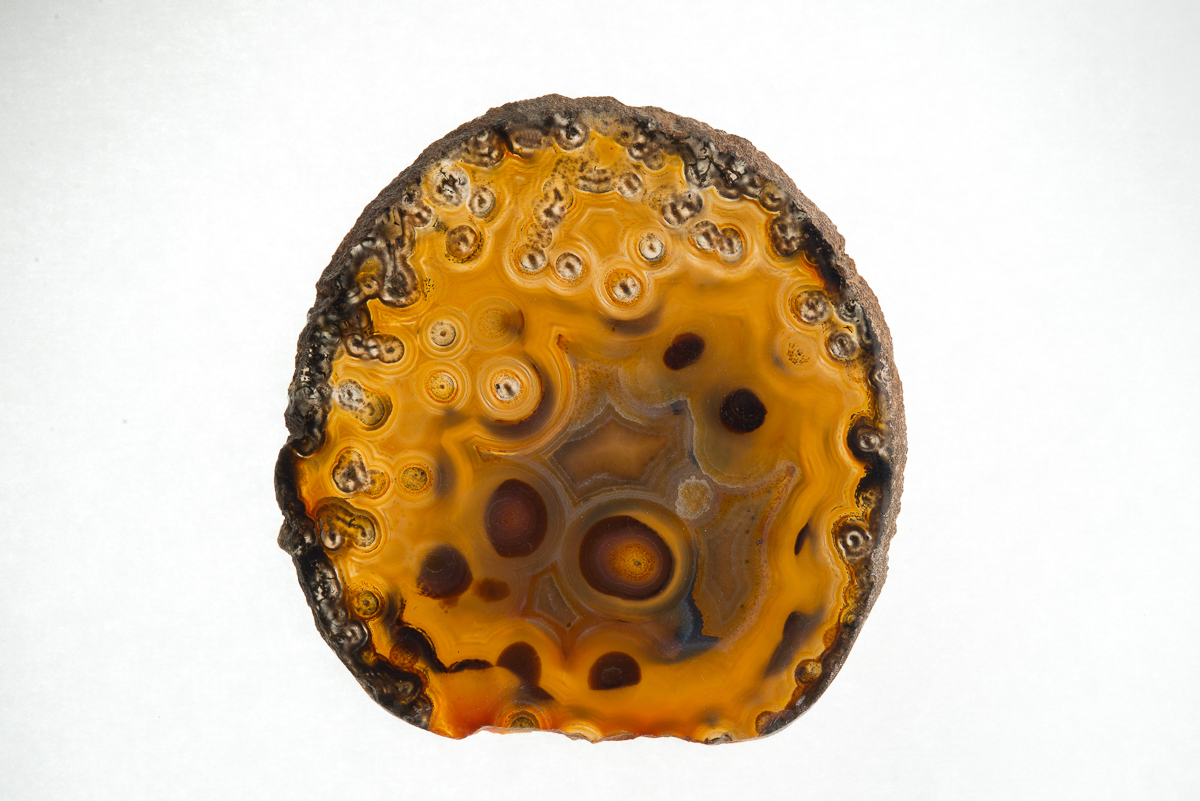

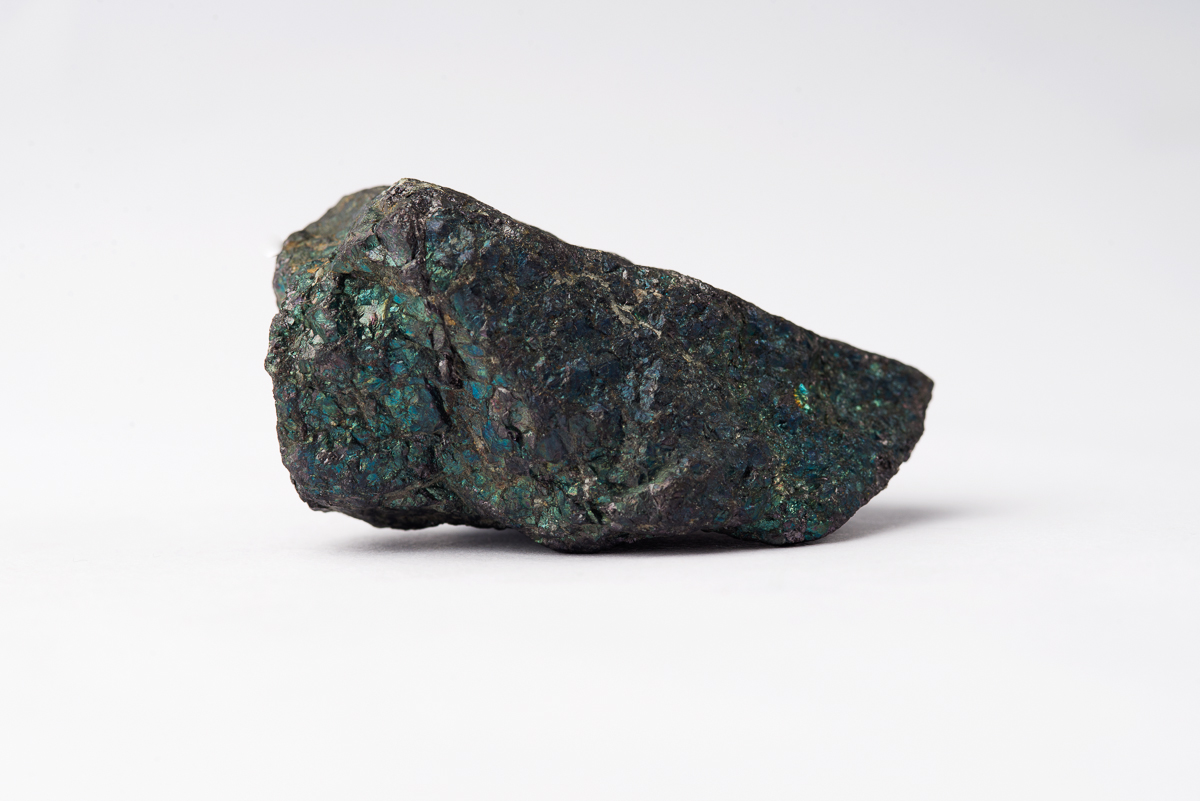
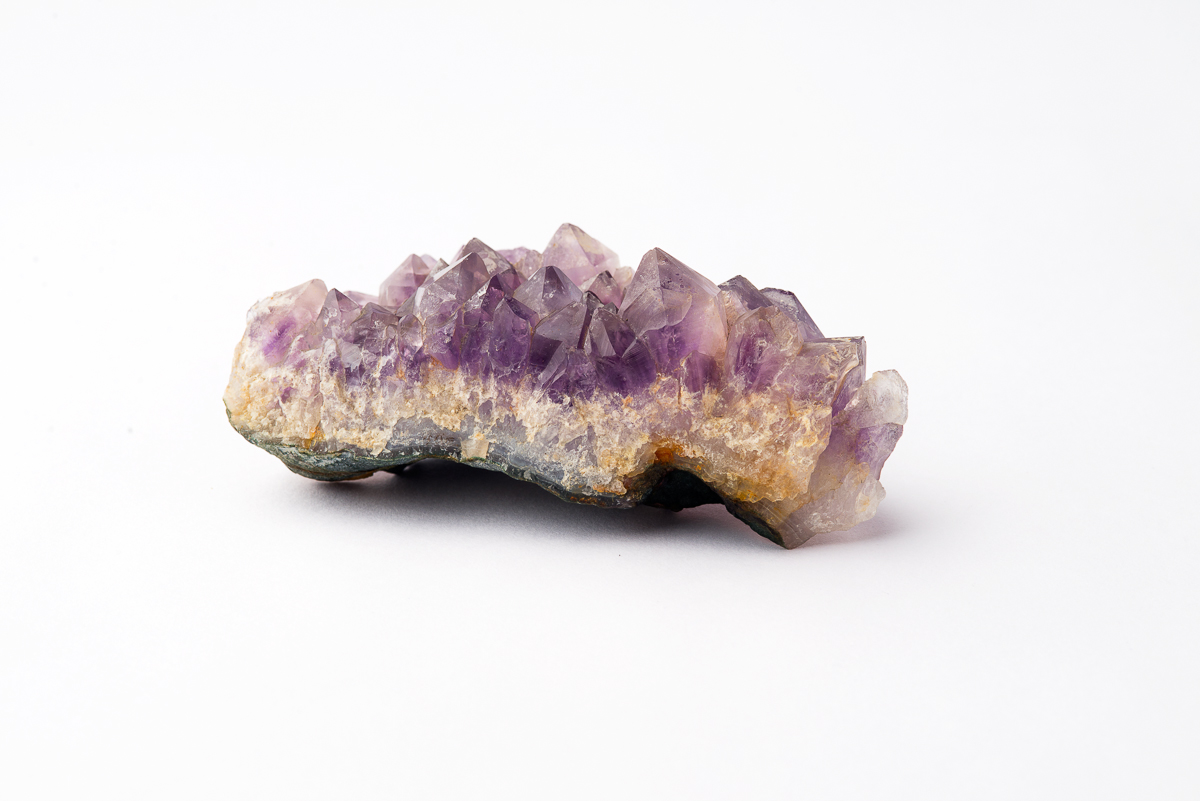
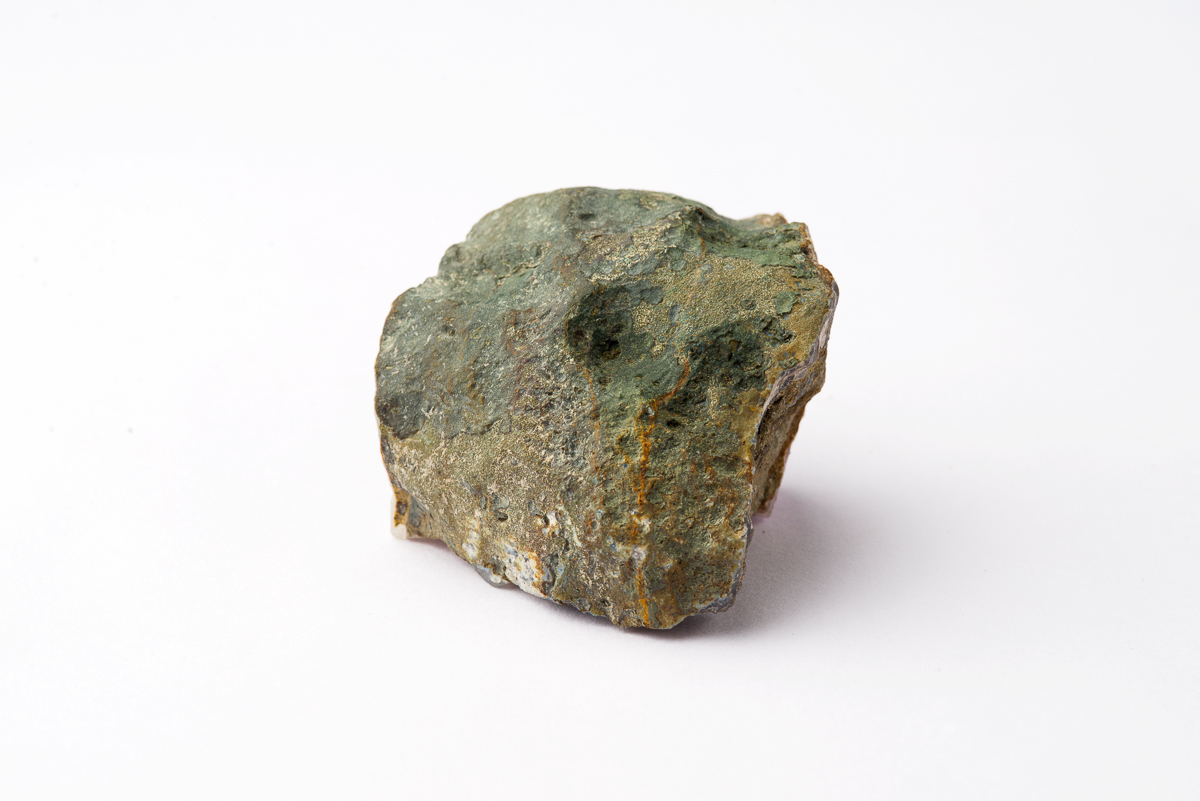
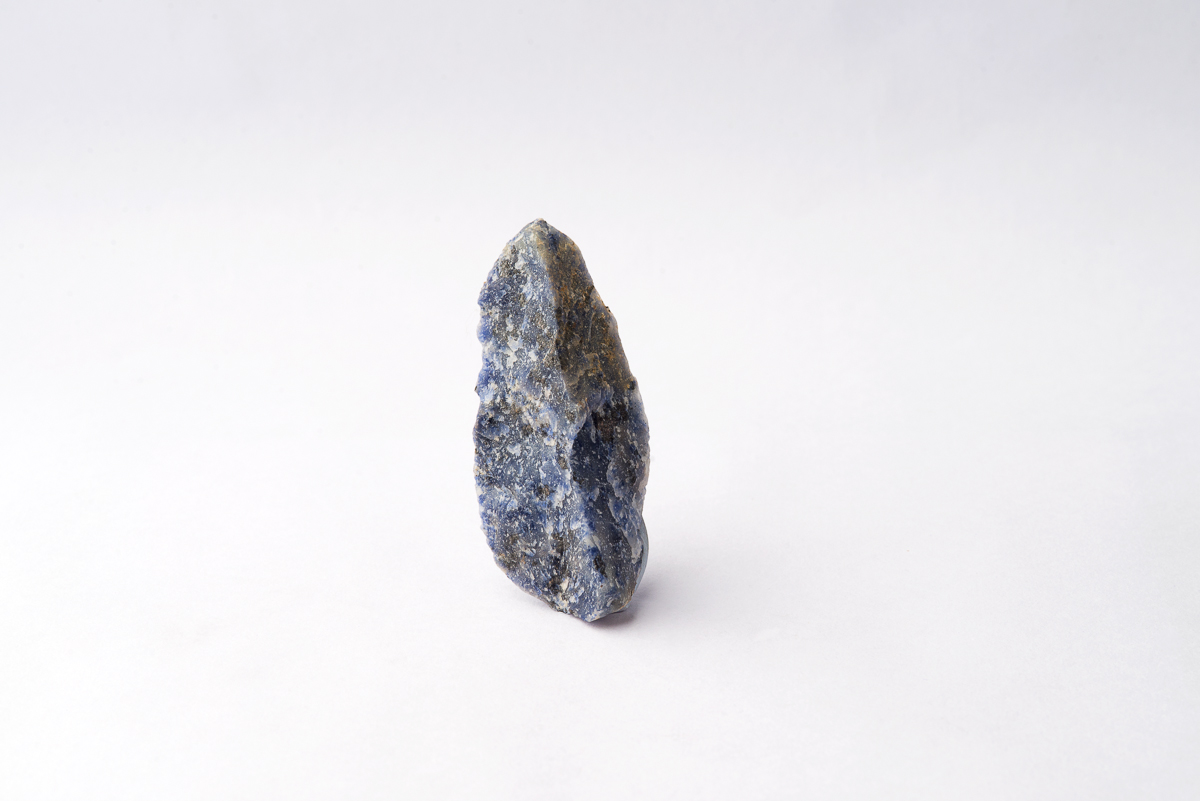
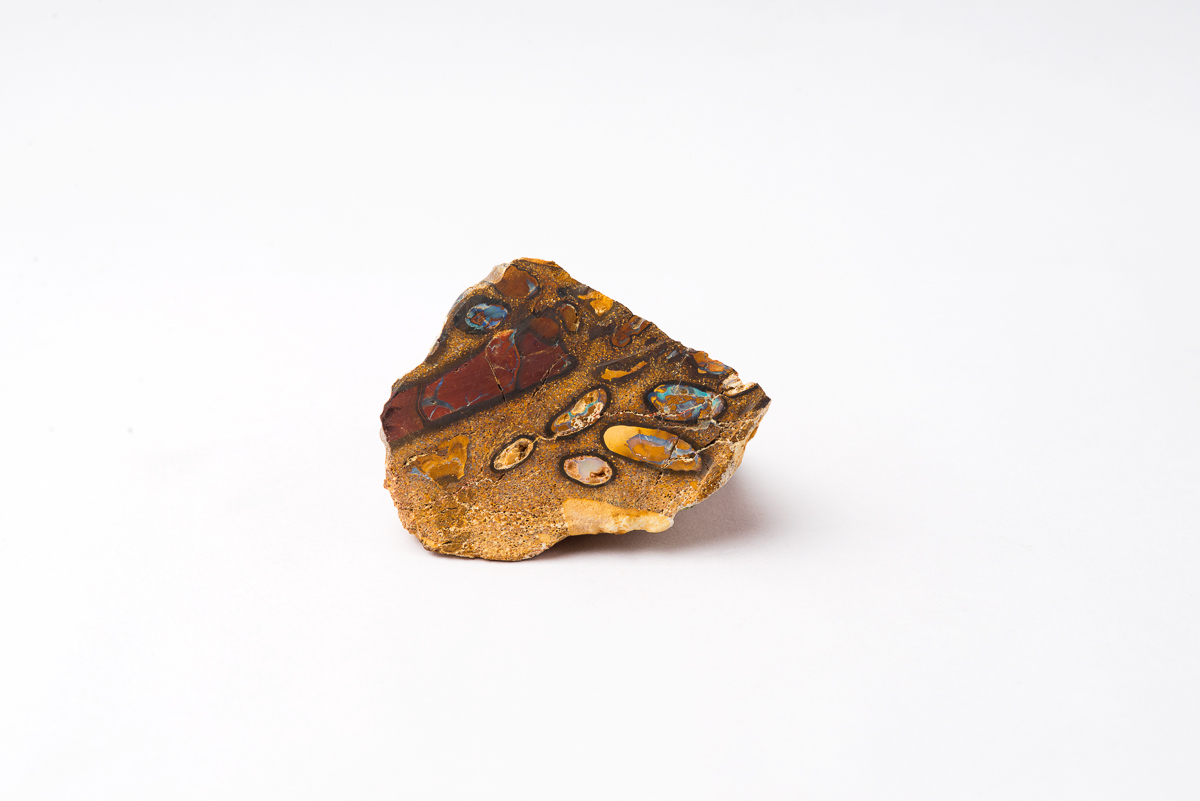
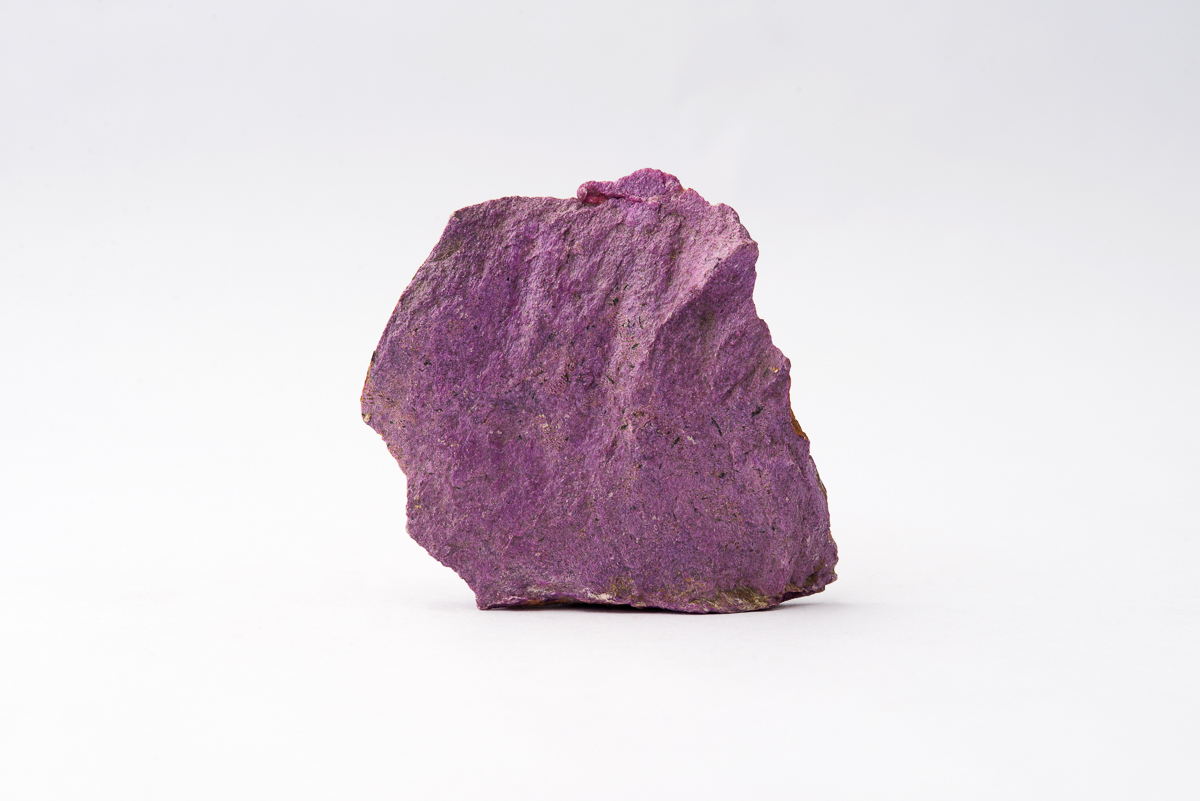

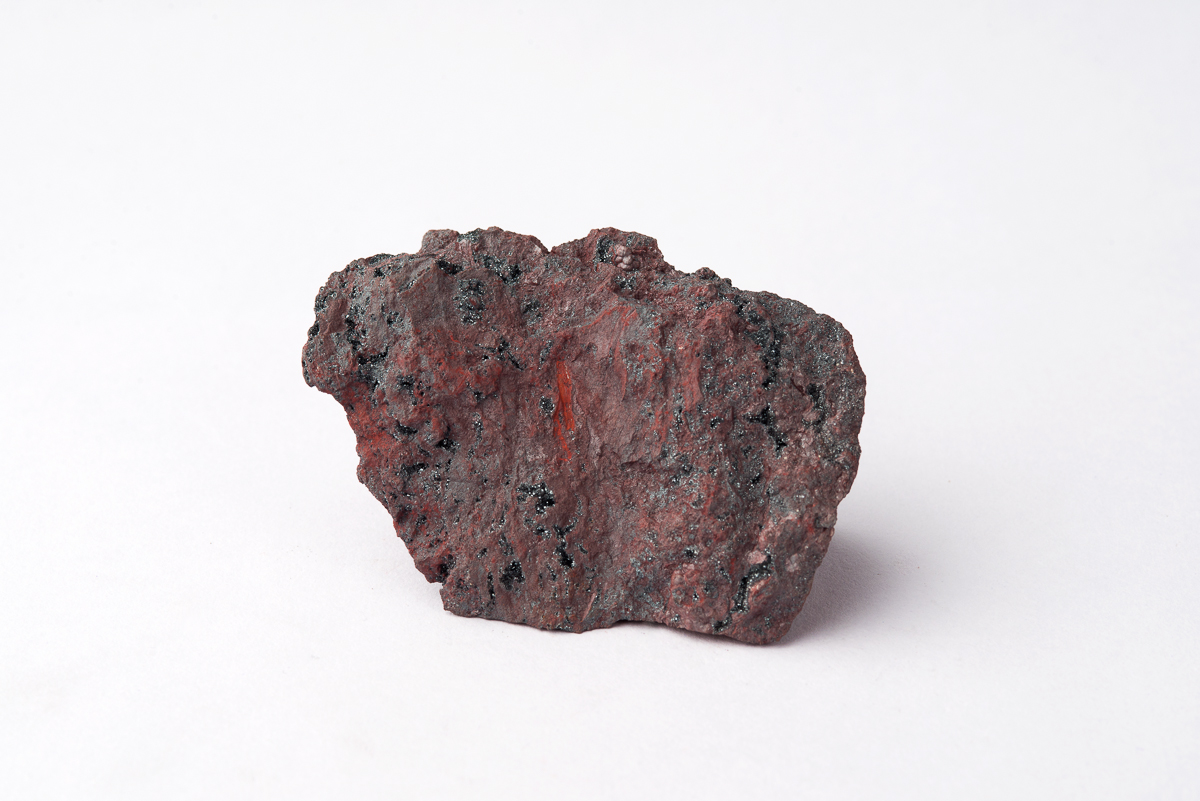
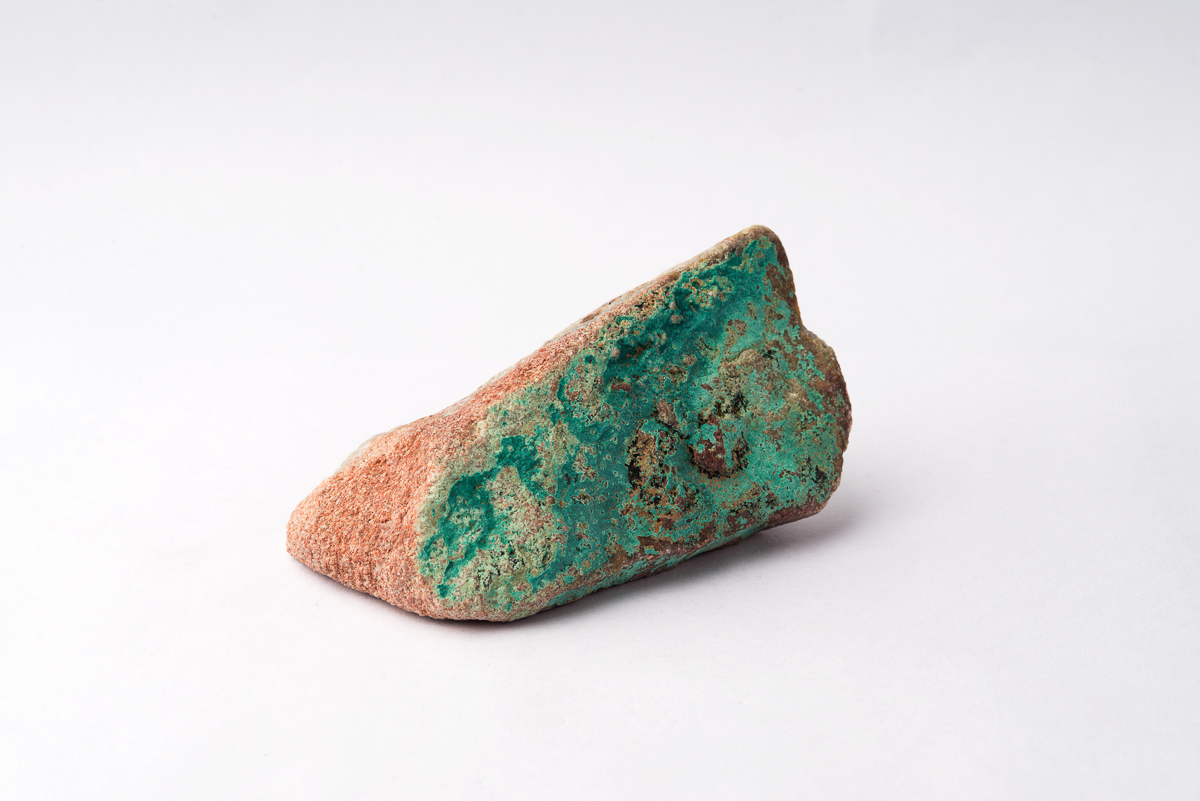
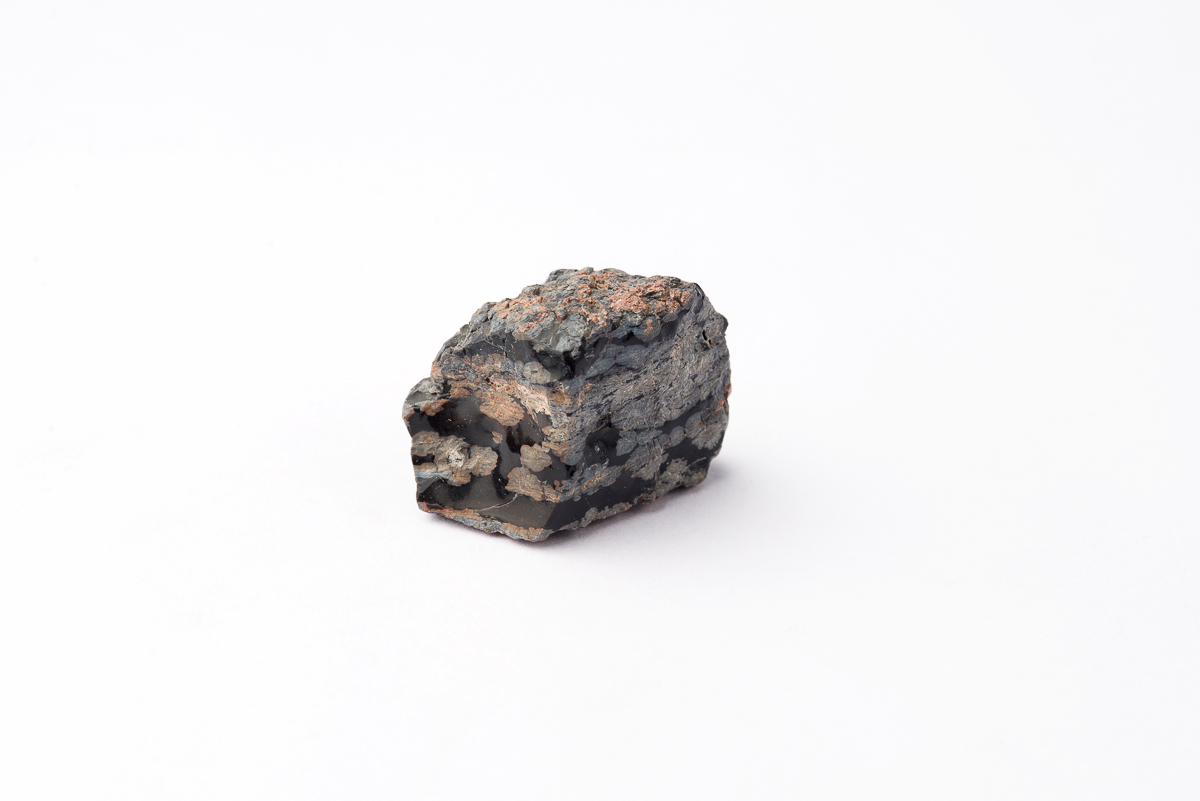
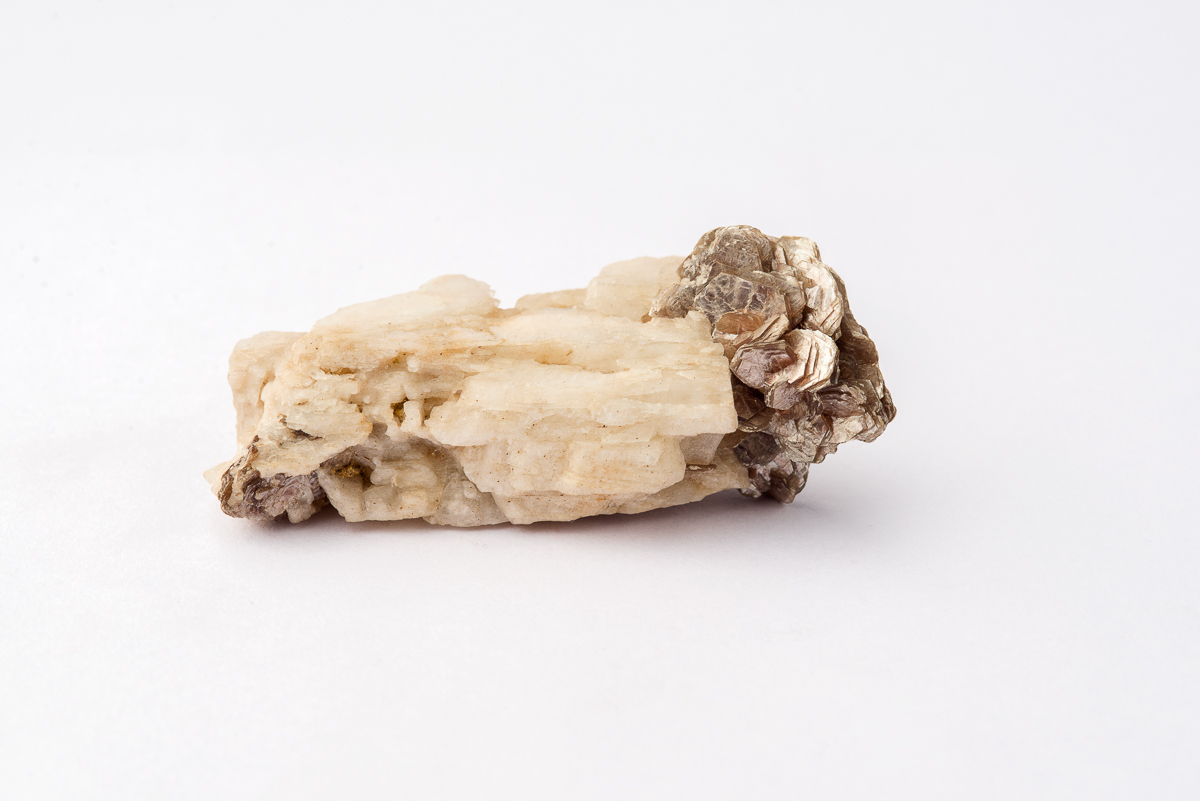
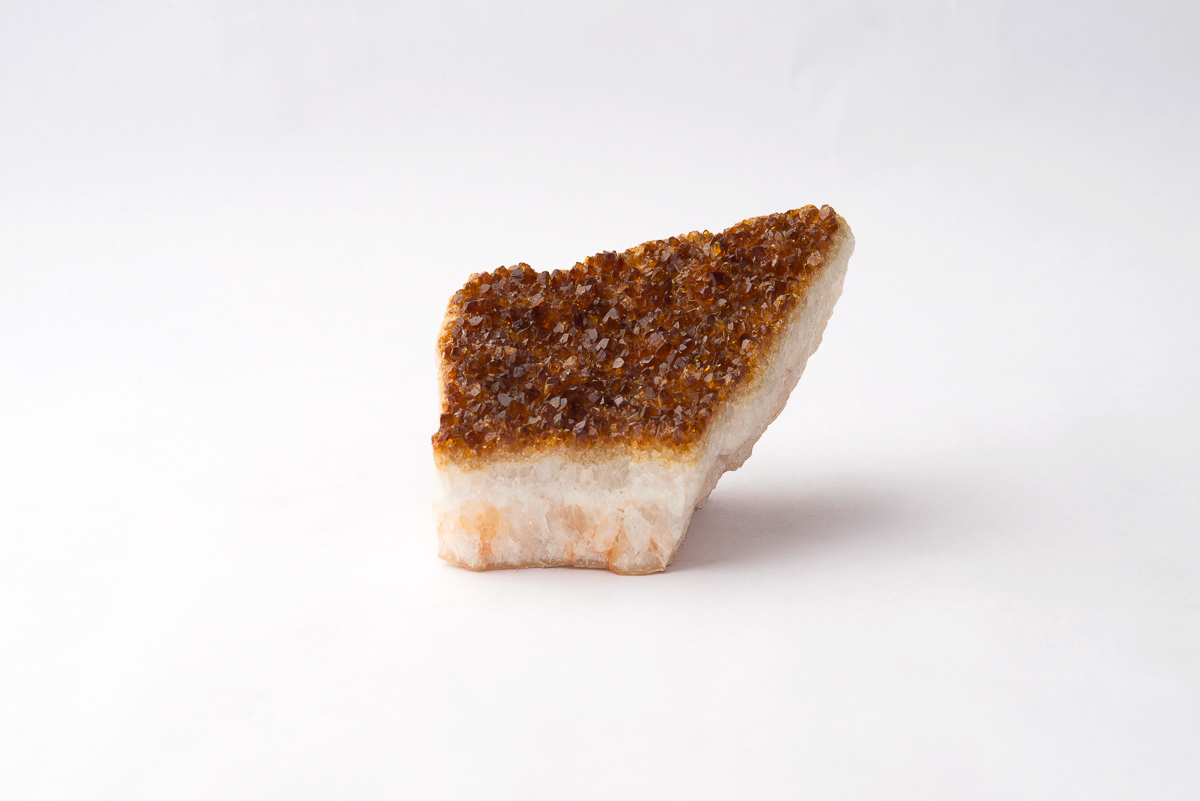
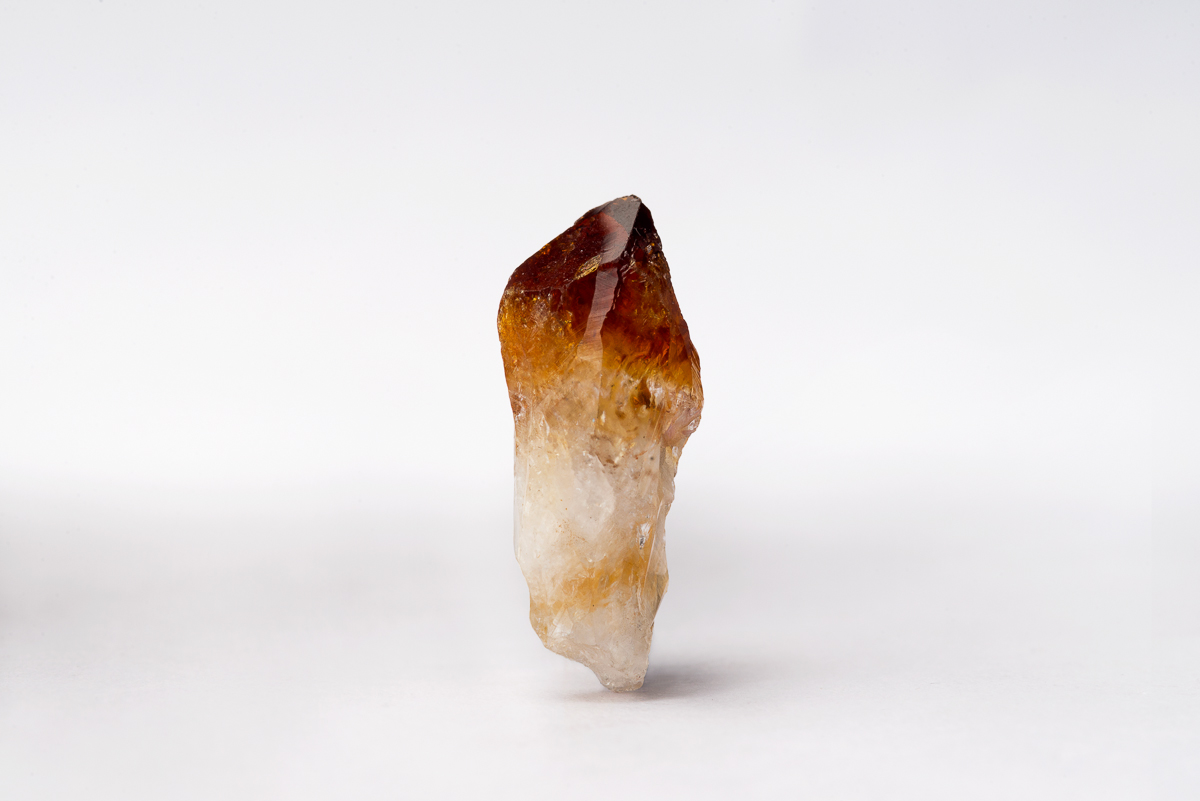
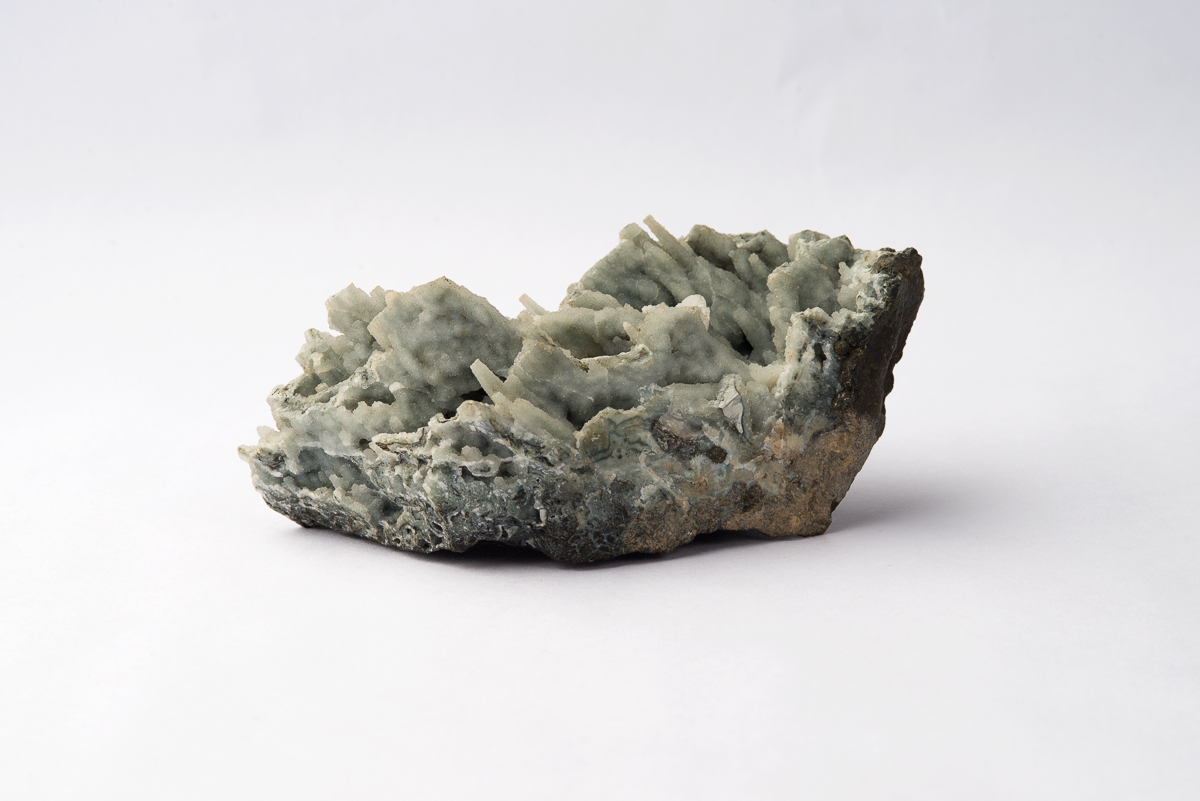

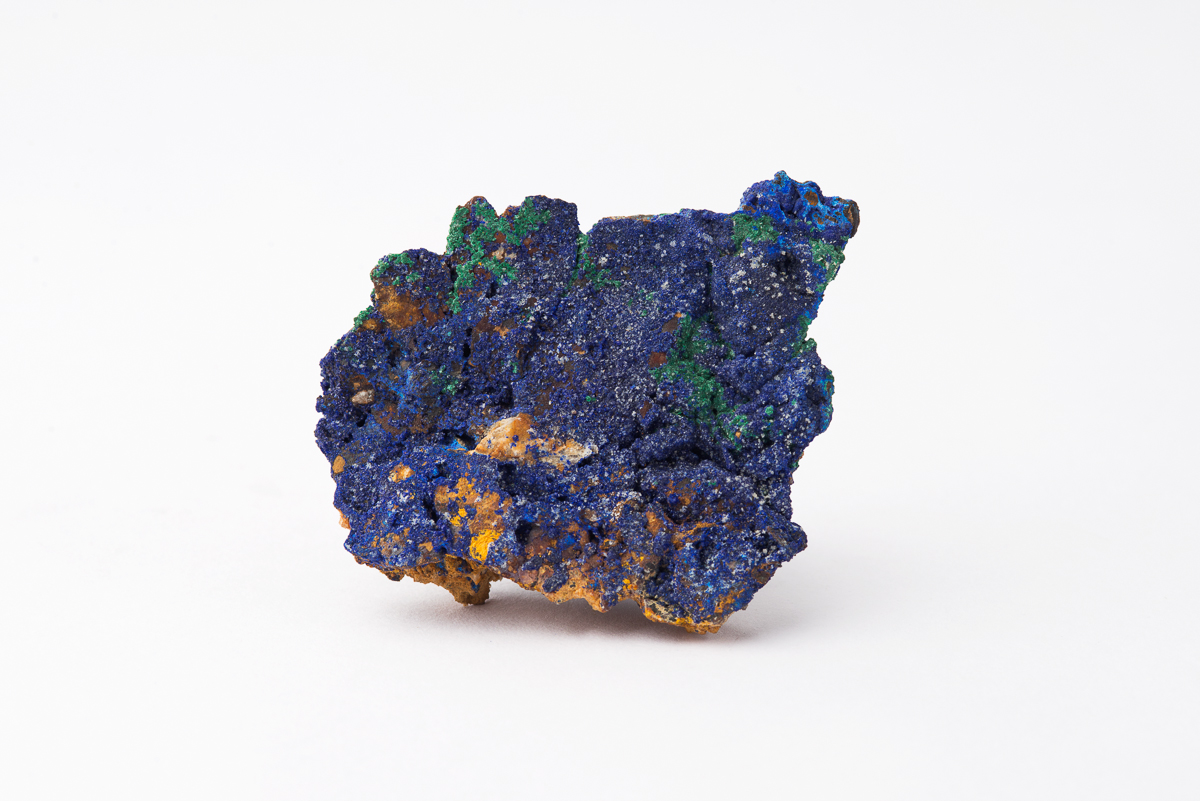
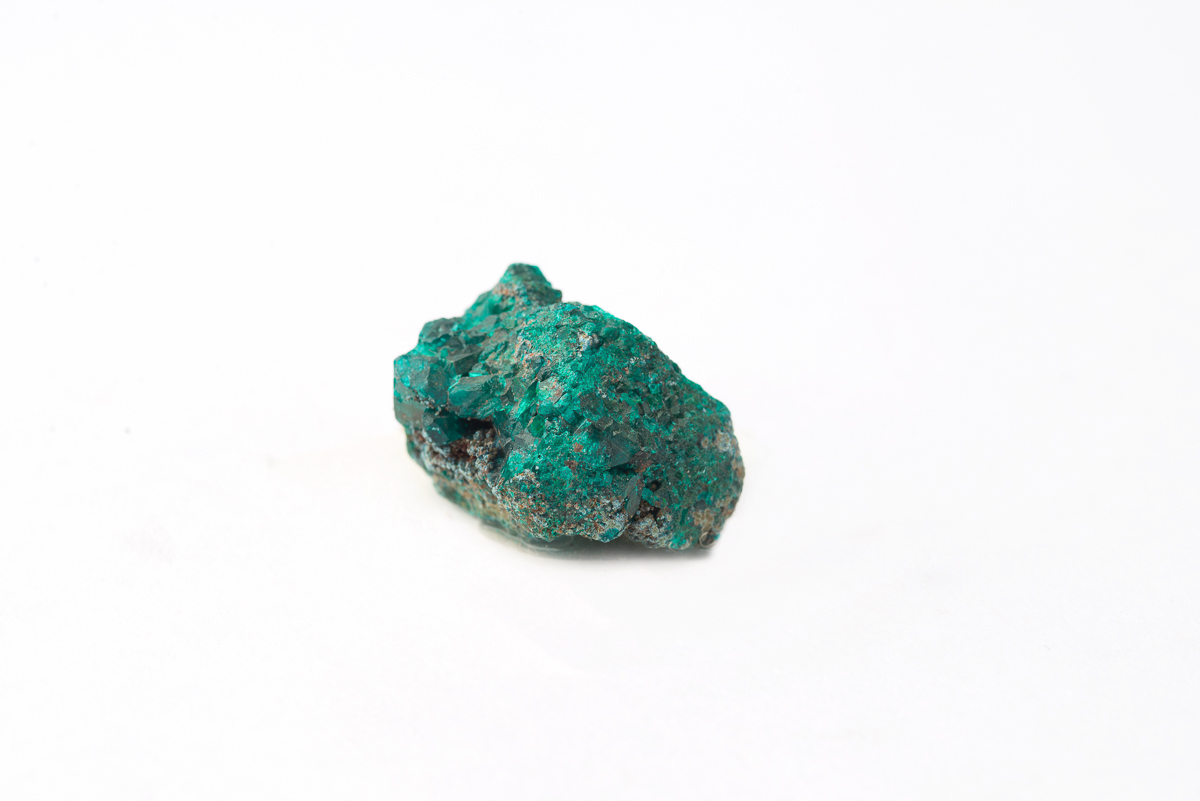
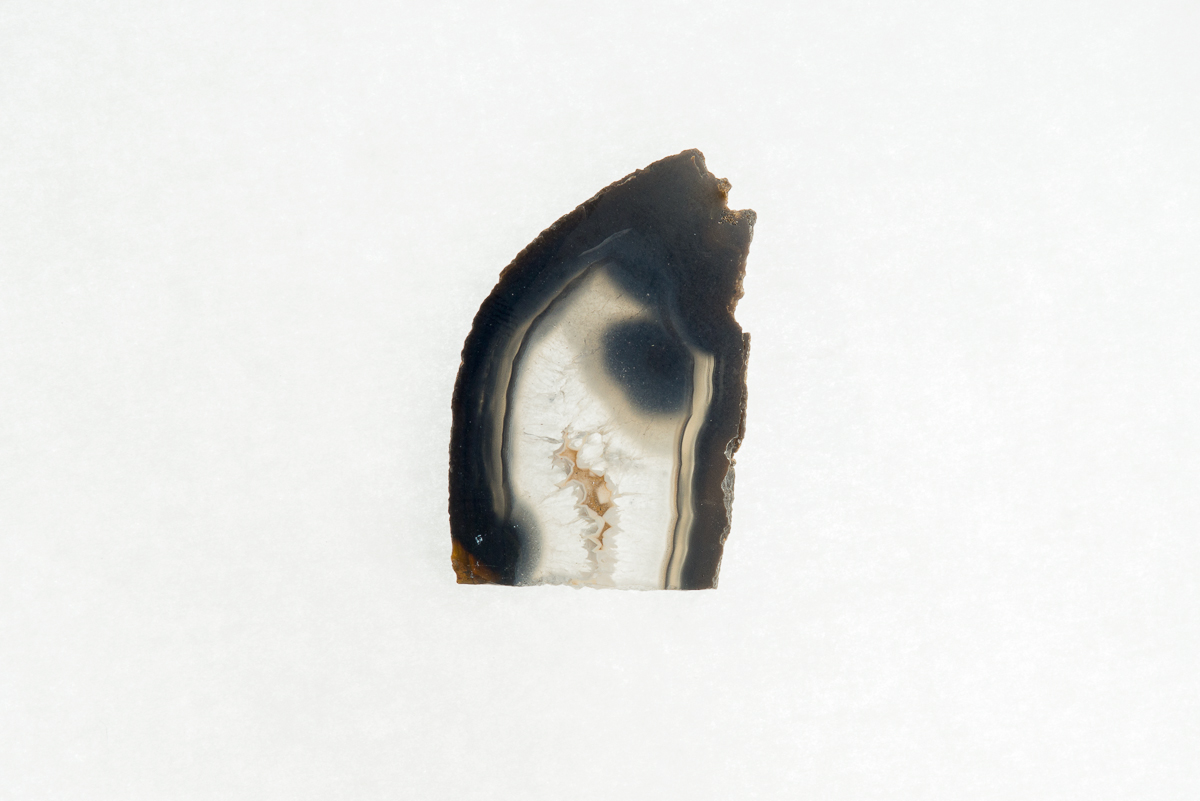
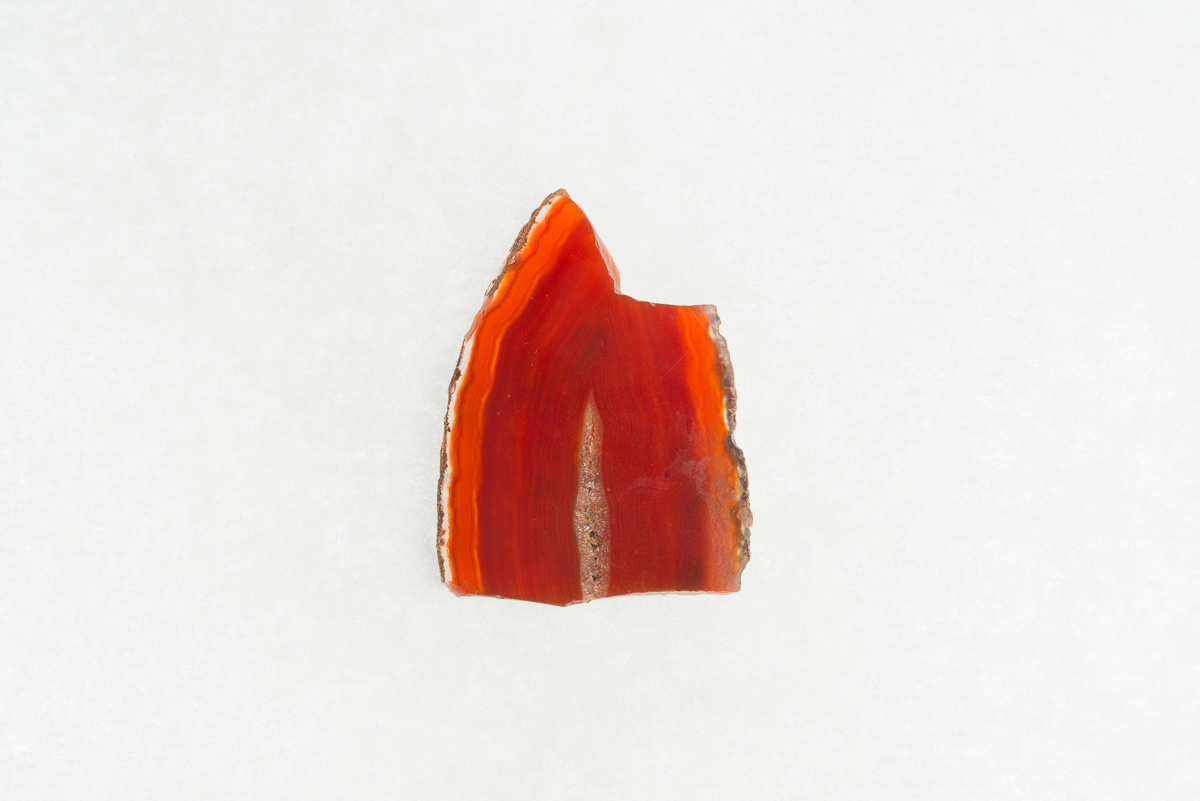
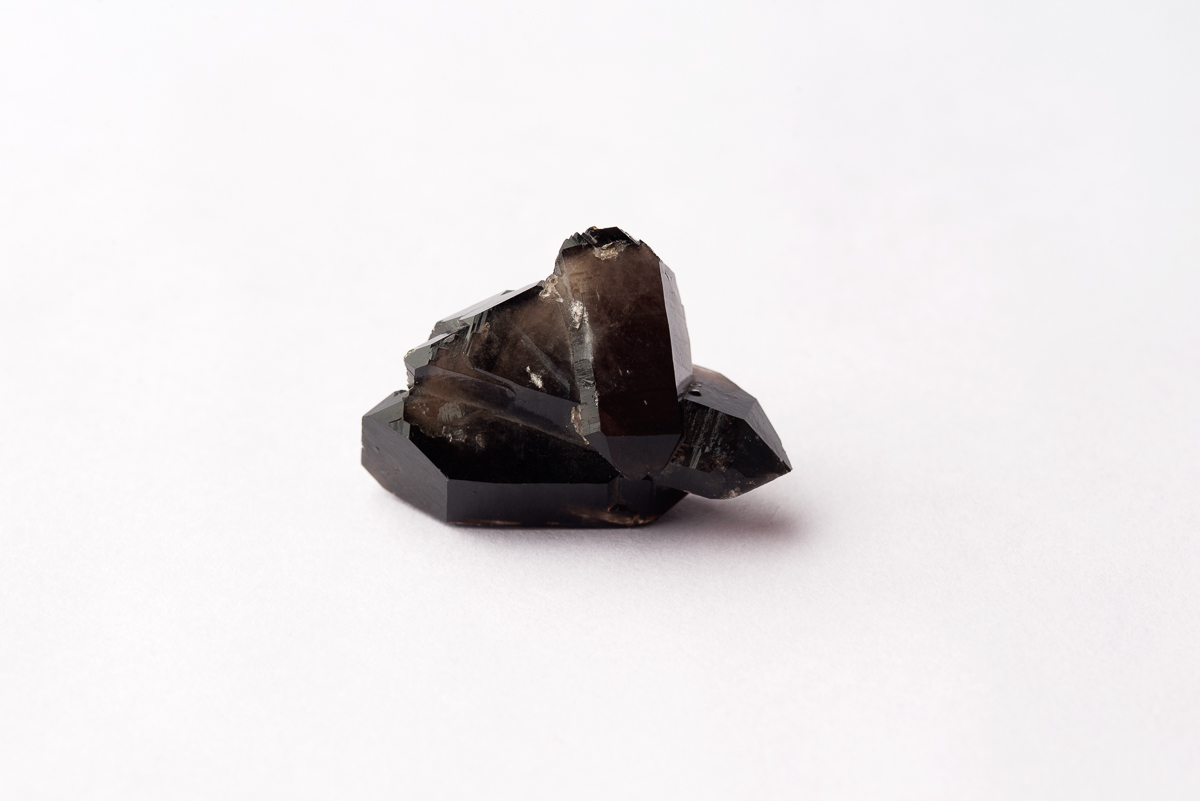


Morocco, 2005. Erythrite is a deeply coloured reddish or pink ore of cobalt, with its distinctive colour caused by chromium content. Erythrite derives its name from the Greek erythros. meaning red, in reference to the hue of the mineral. Erythrite has been found in the Scheeberg District of Germany, Queensland, Australia, and Ontario Canada. The largest erythrite crystals ever found come from the Bou Azer district in Morocco.

Michigan, USA, 2005. Copper, a native element, is abundant enough to be mined in its native (pure) form only on the Keweenaw Peninsula in northern Michigan and in Coro-Coro, Bolivia. Usually it is mined from copper-rich ores such as chalcopyrite and bornite. Formed in cavities and fissures of basalt volcanic rocks, it is often found in association with other elements, such as silver and iron. A good conductor, copper is widely used for electrical wiring. Ductile and malleable, it is rolled and shaped to make water pipes and also mixed with other metals to make alloys such as brass and bronze.

Germany, 2001. Chalcedony is the variety name given to fine cryptocrystalline quartz, where crystals are too fine to be seen with the unaided eye or an ordinary microscope. Chalcedony occurs in almost any colour or combination of colours.

Germany, 2001. Another example of chalcedony comprising fine cryptocrystalline quartz. Varieties include agate (coloured bands), moss agate (milky-white background with dendritic green or brown inclusions), carnelian (red to reddish brown), sard (light to dark brown), chrysopase (apple green), bloodstone or heliotrope (green with red flecks) etc.

Germany, 2001. Third sample of chalcedony. Often used as a semiprecious stone or a collector’s decorative item, chalcedony is formed when silica-rich solutions solidify, usually in veins or cavities. Geodes are small agate nodules with a crystalline interior, often formed as cavities inside hardened volcanic or sedimentary rock, when groundwater minerals seep in to grow crystals.

South Africa, 2003. Bornite, known as the peacock ore, is mainly composed of copper iron sulphide that tarnishes to produce an iridescent purple, red and blue mineral. Bornite usually occurs in hydrothermal metamorphic rocks, in mesothermal veins, in hydrothermal replacement deposits and igneous intruions and dikes. The largest and most distinct bornite specimens have been found in Kazakhstan, and many more in Zimbabwe, Zaire, Mexico, England and south-western USA.

India, 1996. Amethyst is the purple variety of quartz and a popular semi-precious gemstone. The name "amethyst" comes from a Greek phrase meaning "not drunken" referring to the belief that amethyst protected its owner from drunkenness, and/or most likely referring to the wine-like colour of the crystals. The purple hue in amethysts often occur in variable intensity, ranging from a light violet to deep purple.

India, 1996. Outer surface of a geode with inner lining of amethyst crystals. Amethyst can occur as long, prismatic, pyramidal crystals or can form as druzes that are crystalline crusts with pointed terminations. Noteworthy areas with prominent amethyst mines are located in Mexico and Brazil.

South Africa, 2003. Sodalite is a deep blue mineral often used as an ornamental gemstone. The name sodalite refers to its sodium content. Sodalite is found in igneous rocks such as nepheline syenite and in dikes and sills that are low in silica. Sodalite commonly occurs in Montana, South Dakote, Colorado, Ontario, Vesuvius in Sicily, Scotland, Germany, Russia and Zambia.

New South Wales, Australia, 2012. Opal is an amorphous silicate that is closely related to quartz but has no crystalline structure. It is one of only two gemstones (amber being the other) that are amorphous. The name is derived from the Greek opalios or Sanskrit upala, for gem or precious stone. Deposited at low-temperatures from silica-rich waters in fissures and cavities in all kinds of rocks, and often commonly found around geysers and hot springs, the world’s most valuable opals come from Queensland and New South Wales in Australia. This particular specimen is from Blue Mountains, New South Wales.

South Africa, 2003. Stichtite is a rare and unusual carbonate because it forms in mostly compact masses or micaceous aggregates. This is in stark contrast to the majority of of carbonates that form well-shaped, large and abundant crystals. Notable occurences of stichtite have been found in Tasmania, Australia, Quebec, Ontario and South Africa.

Scotland, 2005. Scolecite is a calcium aluminium silicate that is named after Greek skolex, which means worm, because the mineral in some cases curls up like a worm when heated over a blowpipe flame. Scolecite occurs worldwide in cavities and veins cutting altered basaltic rocks. There are hydrothermal occurrences in fissures and fractures in granite and gneiss terrains, such as the Central Swiss Alps, as well. Some of the best specimens can be found in the Deccan Plateau in India. This particular specimen is from Scotland. Scolecite is often also believed to have healing properties.

Andhra Pradhesh, India, 2010. Specularite is a variety of hematite that is characterized by aggregates of silvery, metaliic, specular hematite flakes. Hematite is the principle ore of iron, which is mined in huge quantities throughout the world for industrial production. Hematite is also used as a minor gemstone, often cut and polished for jewelry and ornaments.

Chrysocolla, Arizona, USA, 2010. Chrysocolla is a sky-blue to green-greenish-blue silicate mineral and a minor ore of copper. The name is derived from Greek chrysos, for gold, and kola, meaning glue; it looks similar to another material used as a flux in soldering gold. Chrysocolla usually occurs in oxidized zones of copper deposits. This particular one was collected in Arizona. Chrysocolla can also be commonly found in other parts of southwestern USA, Mexico, England, Chile and Zaire.

USA, 2001. Obsidian, or volcanic glass, is a rock that does not have a crystalline structure and maybe black, dark grey, red or brown, depending on the type of iron minerals present. Black obsidian is found in many parts of the world, the most famous occurrence being Obsidian Cliffs in Wyoming. Snowflake obsidian is a rarer variety of this rock. Obsidian was also used for making various tools and jewelry in prehistoric times.

Germany, 2006. Muscovite is a phyllosilicate mineral composed of aluminium and potassium. The name muscovite is derived from its use as Muscovy-glass, after the old Russian province. The pale member of the mica group, it is widely distributed in all types of rocks, common in granites, gneisses and schists and clastic sandstones. The term mica probably comes from the Latin micare, meaning to shine. Large deposits can be found in Black Hills, South Dakota, California, Colorado, Norway, Switzerland and India.

USA, 2004. Citrine is the yellow to brownish-red macrocrystalline variety of the mineral quartz. Quartz is one of the most widely distributed and important rock-forming minerals, occurring in all types of igneous, metamorphic and sedimentary rocks and mineral veins and cavities. Although citrine is often cut as gemstone, naturally occurring citrine is relatively rare. This specimen may have been heat-treated to enhance its colour, a result of finely distributed iron impurities.

USA, 2004. Solitary crystal face of citrine, the yellow to brownish-red macrocrystalline variety of the mineral quartz. This pyramidal specimen may have been heat-treated to enhance its colour, a result of finely distributed iron impurities.

India, 2003. Quartz, commonly known as crystal or rock crystal, is one of the most abundant minerals. Crystalline quartz has many varieties; when pure, it is colourless, but may also be variously tinted: milky (white), smoky (black), rose (pink), amethyst (purple), citrine (yellow). Widely distributed and an important rock-forming mineral, quartz occurs in all types of rocks, including granites, gneisses, clastic sediments, veins and cavities.

USA, 2000. Selenite is a colourless and transparent variety of gypsum, one of the most widely used minerals in the world. Selenite derives its name from the ancient Greek word for moon or moon stone. A common sulphate mineral in sedimentary environments, it is found in massive evaporate deposits consisting of highly saline environments. Evaporates are formed when bodies of water evaporate leaving behind chemicals that were dissolved in them. Selenite derives its name from the ancient Greek word for moon or moon stone.

United Kingdom, 2002. A minor ore of copper, azurite is a carbonate mineral that derives its name from the Persian word lazhward, meaning blue. Azurite often is often found interbanded with malachite and associated with copper and cuprite, occurring as a secondary mineral in the oxidized zone of copper deposits. Azurite is commonly found in Arizona, New Mexico, California, Morocco, Australia and Namibia. Some of the earliest blue pigments were sourced from azurite.

Congo, 2003. Dioptase is an emerald-green crystalline mineral that is found in the oxidized zone of copper deposits, especially in arid climates. The name comes from the Greek dia, for through, and optasia, for vision, because cleavage planes are visible in transparent crystals. Dioptase has been found in parts of Arizona and California in USA, Russia, Chile and Namibia. This particular specimen is from Congo.

Brazil, 2000. Geodes are small agate nodules with a crystalline interior, often formed as cavities inside hardened volcanic or sedimentary rock, when groundwater minerals seep in to grow crystals.

Brazil, 2000. Agates are variegated forms of chalcedony that consist of microscopic fibrous quartz crystals. Agates develop as secondary deposits in hollow cavities called vesicles. Although most often found in vesicles of volcanic rock, agates can form in any kind of rock. This cryptocrystalline specimen is particularly bright in colour, a distinctive characteristic of many agates.

South Africa, 2003. Quartz, commonly known as crystal or rock crystal, is one of the most abundant minerals. Crystalline quartz has many varieties; when pure, it is colourless, but may also be variously tinted: milky (white), smoky (black), rose (pink), amethyst (purple), citrine (yellow). Widely distributed and an important rock-forming mineral, quartz occurs in all types of rocks, including granites, gneisses, clastic sediments, veins and cavities.

India, 2001. Obsidian, or volcanic glass, is a rock that does not have a crystalline structure and maybe black, dark grey, red or brown, depending on the type of iron minerals present. Black obsidian is found in many parts of the world, the most famous occurrence being Obsidian Cliffs in Wyoming. Snowflake obsidian is a rarer variety of this rock. Obsidian was also used for making various tools and jewelry in prehistoric times. The above specimen features conchoidal fractures similar to those seen when glass breaks.